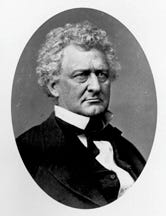#66: CIVICS 101: The Legislative Branch
Q&A #66: What business can be transacted by unanimous consent?

Our American Government
Our American Government is a small book published by the House of Representatives for citizens and those who seek a greater understanding of the American interpretation of democracy. It follows a question-and-answer format and covers a broad range of topics dealing with the three branches of our Government, the electoral process, and the role of political parties.
The Savvy Citizen is reproducing the 169 questions-and-answers through a series of posts called Civics 101. Each post will contain the Q&A as well as some additional commentary to add historical context, fun facts, or anything we believe will add to our collective understanding of these topics.
Think of it as your adult Civics class but without the test!
Let’s keep at it.
SECTION: The Legislative Branch: The Congress
Congressional Rules and Procedures
Q&A #66: What business can be transacted by unanimous consent?
Almost anything can be done in either House by unanimous consent, except where the Constitution or the rules of that Chamber specifically prohibit the Presiding Officer from entertaining such a request.
For example, since the Constitution requires that a rollcall vote be taken to pass a bill over a Presidential veto, the Presiding Officer of the House or the Senate cannot entertain a unanimous consent request to waive this requirement. In the House of Representatives, unanimous consent requests to admit to the Chamber persons who are not permitted to be present under its rules, or to introduce visitors in the galleries to the House, are not in order.
My Thoughts
The first formal unanimous consent agreement in the Senate was signed on March 24, 1846. Here’s a summary of the role of unanimous consent agreements in the U.S. Senate, taken from the Senate’s website:
Unanimous consent agreements bring order and structure to floor business and expedite the course of legislation. They can be as simple as a request to dispense with a quorum call or as complicated as a binding contract resulting from prolonged and often spirited debate. Senators have been conducting routine business by unanimous consensus since 1789, but the more formal UC agreement dates to the 1840s when Senator William Allen of Ohio sought a method to end debate.
On March 24, 1846, Senator Allen expressed his desire “that there should be some day fixed, by a general understanding,” to bring to close the debate on the Oregon Treaty. After all, for nearly four months, the Senate had been debating this treaty involving a long-standing boundary dispute with Great Britain. Settlement of the treaty would pave the way for the new state of Oregon.
Unfortunately for Allen and his allies, there was no mechanism in place to force a vote, or even to encourage a vote. Cloture, as we know it today, was not established until 1917. As Allen explained, the Senate had not adopted the House’s practice of calling the “previous question,” nor was it “the habit of the Senate to pass a resolution to take a subject out of discussion.” Allen emphasized, however, that the Senate did have a practice of facilitating votes by “a conversational understanding.”
The Senate responded to Allen’s suggestion in a typically polite but pointed manner. I oppose “the adoption of any rule or practice by which debate should be stifled,” protested Tennessee senator Spencer Jarnagin. Gentlemen can “determine for themselves” when proper action should be taken. And so, the debate over the Oregon Treaty continued.
On April 13, 1846, Allen again took the floor. A vote on the Oregon question was inevitable, he argued, so why not agree “to the exact day on which the Senate would proceed to vote.” Such action would be acceptable, argued Kentucky’s James Morehead, “provided it was not to be regarded as establishing a precedent.” But it did set a precedent. Senators reached a consensus and agreed unanimously to end debate and call a vote. In June the Senate approved the treaty resolutions, a territory was established, and in 1859 Oregon became our 33rd state. Scholars believe this is the first example of the Senate adopting a formal UC agreement.
Before long, such pacts were common, but into the 20th century they remained just “a gentlemen’s agreement.” As one presiding officer complained, they could be “violated with impunity” by any senator. Consequently, in January of 1914, the Senate adopted a new rule stating that unanimous consent agreements “shall operate as the order of the Senate” and can be altered only by another UC agreement
By the 1950s UC agreements were a routine but limited procedural tool—and then Lyndon Johnson became leader. Truly understanding the potential of this procedural device, LBJ revamped UC agreements to regulate the entire legislative process—to manage debate, to limit amendments, to schedule a vote, and to strengthen the force of his own majority leadership.
Back next time with Q&A #67: How are record votes taken in Congress?
Meanwhile, don’t forget that we’re organizing the post links on a single page available here.
xo,
Kelley for the Savvy Citizen Team
March 21, 2025



